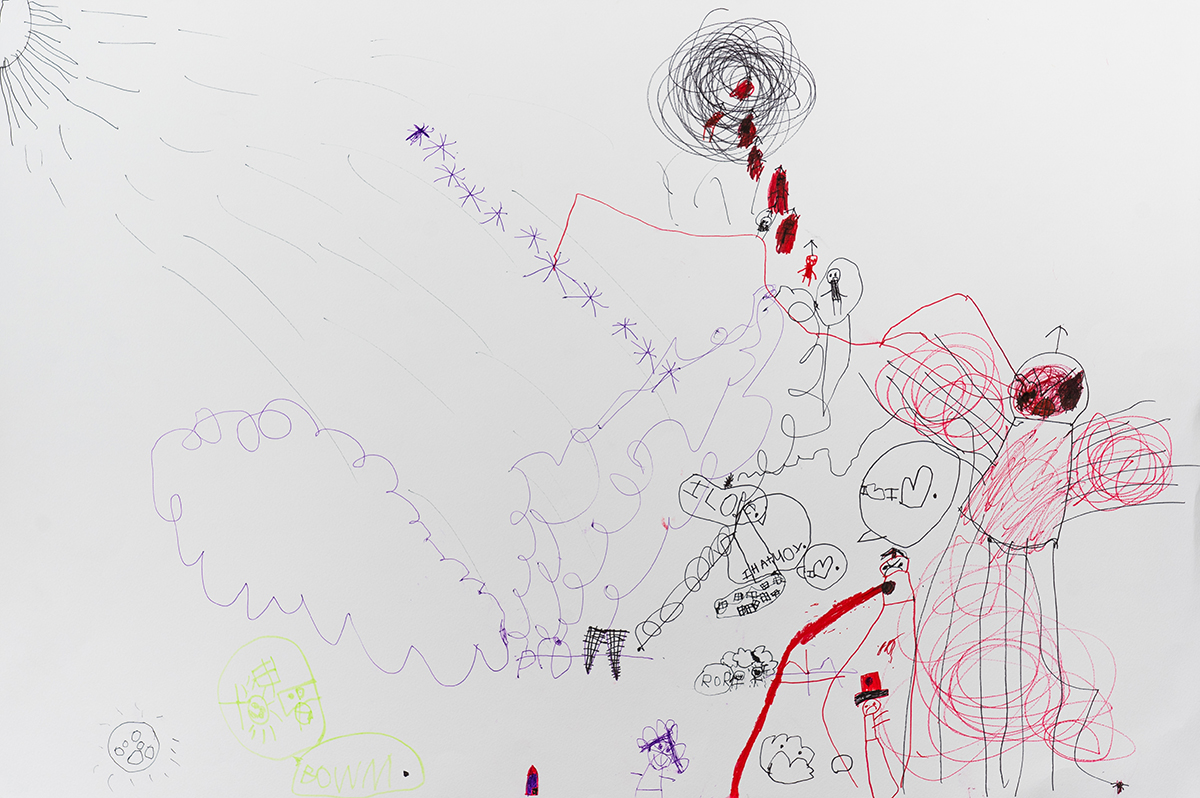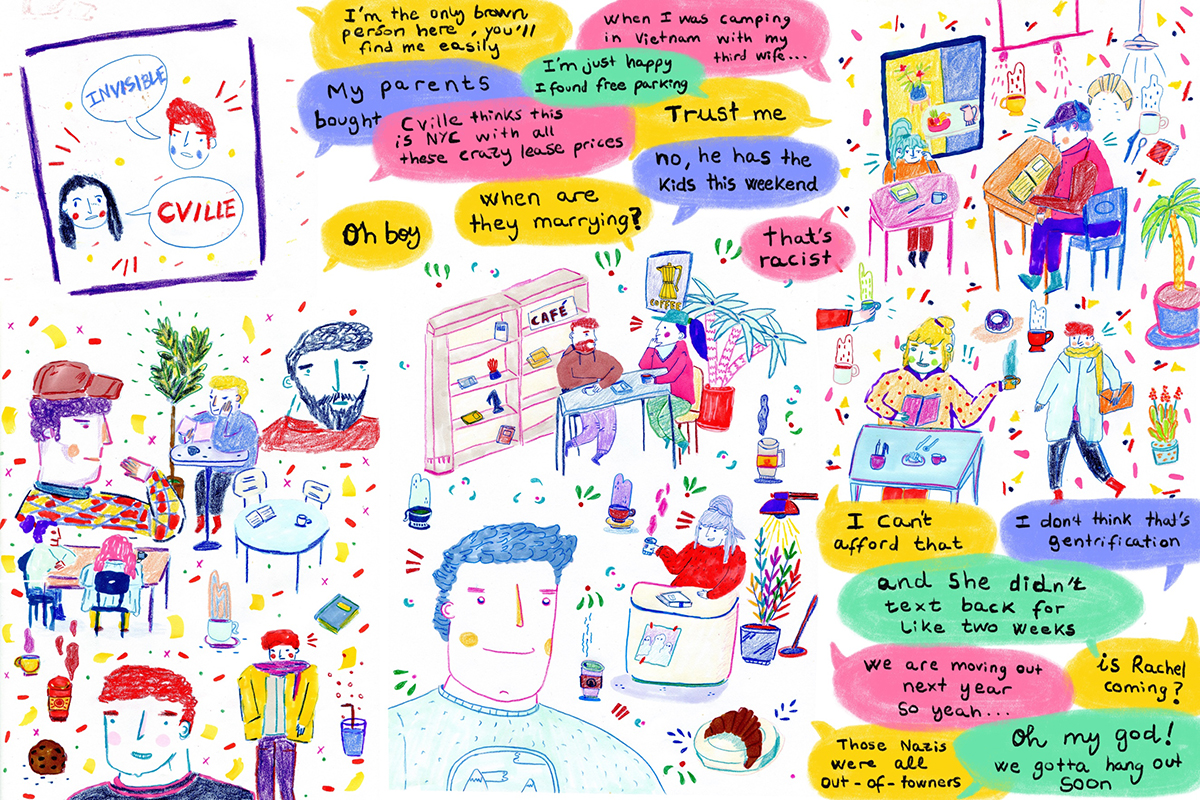BDA Prize 2019 Winners
Thanks to all of our entrants who submitted to an excellent discussion and presentation at the Jefferson School African American Heritage Center.

0424
Mitchell Roessing
NINE (9) CITIES
This is a critique on those Invisible Cities that have been lost in the development of the City of Charlottesville.
Italo Calvino’s Invisible Cities is organized upon nine (9) chapters that provide a structure to illuminate eleven (11) internal themes. This forensic mapping investigation follows similar guidelines to uncover the spatial relationship among nine (9) Charlottesville neighborhoods that have fallen victim to development throughout history.
shadows on west main
The array of intersecting lines reveals the invisible city center along West Main Street. The shaded representation of West Main is a critique of the towering shadows of development that threaten the progressive streetscape design and the preservation of the area’s history and identity.
This analysis posits the potential cost of continued development and urges that each step forward reflect upon the past.

1019
Steve Haske
Charlottesville is many things to many people. In her ongoing history, friends and enemies have swept through her streets. Yes, in her early adolescent years, but in recent years as well. Charlottesville’s idyllic beauty, squared lanes, and stately architecture lays over her flawed foundation. Her storied and contentious history is as complicated and organic as a map. And just as difficult to distill down into a legible document. A map by its nature is a snapshot of a specific moment in time. This moment in time is defined by Charlottesville’s residents and the surrounding swirl of history, both cultural and political. A notch’d path. A rich soil. A call for freedom. A plea to learn. A raised voice. An erased community. A hopeful song. A continuous evolution.
I enjoy wondering the streets and parks and soaking up the atmosphere of my adopted home. The historical patina, cracked order and varying seasons fit me better than where I originally come from. I draw the city one element at a time.

1221
Stilts Walker
Dream like Martin. Lead like Harriet. Fight like Malcolm. Think like Garvey. Write like Maya. Build like Madam C.J. Speak like Frederick. Educate like W.E.B. Believe like Thurgood. Challenge like Rosa.
Challenge like Rosa.
Resolute young protesters on August 12, 2017 do the hard work of challenging racist ideology on the streets of Charlottesville, Virginia. We have a long way to go but we take courage in the strength and righteousness of our next generation.

1973
Bill Mauzy
While walking up Fourth Street one July morning, my workaday routine, I pause just beyond the railroad to glance at the concrete wall. Its cracks and stains familiar. Then I see how light falls on the vines that hang there.
Posters moulder season after season, gaining character with time and weather. I hear plans moulder too. Virginia Creeper sways in an afternoon breeze.
The undulating wires seem to defy purpose. Shouldn’t they be taut? Expecting no answer, I ask this question again and again. From the corner of my eye I see birds coming in fast from the west.
Though I know something of the rhythms and rituals of these streets, I remain a stranger. Yet here too, moments of stillness, whispers of grace.

6878
Mathias Glick
When I discussed the theme of the competition with my son, 6 years old, he said:
“I’m not somebody that knows a lot about what people don’t know about our city.”
I read the brief to him and explained the section that mentions an ‘experience or story that characterizes Charlottesville.’
So he drew a story.
It is complicated, as such things can be, it involves an alien invasion by a squid monster and people getting sucked into a black hole. You can see bits of the city in houses and buildings, the sun and the rising moon. What it boils down to is a story of two unlikely friends, a witch and a man, who work together to save the people of the community. Learning to love people that are different than you and helping where you can.
That seems right.

3635
Sean Kois
Ya estamos aqui. We are already here. We repair the roads that brought us, and build the structures that shelter us all. We harvest the crops and cook the food, tend the stables and repair the fences. We clean the offices in the dead of night, and work long hours while our children get cared for by their siblings. We came for opportunity. We came to escape violence. We came from villages with no running water, and cities owned by the cartels. We send money home, for our ailing parents and crumbling towns. Here, we are silenced, and we are silent, yet we remain. We work where we cannot be seen, and live in areas that are undesirable. In maintaining this community, we maintain our communities. So, enjoy your roads, and take shelter in your houses. Be nourished by your food and overlook your clean spaces. You can build your walls and send your armies, but we come because we have to, our options are few and our hope is everlasting. Ya estamos aqui. We are already here.

1810
Boulanle Adeboye
What do you feel right now? Anonymous participants answer emotion survey cards which are then dyed and assembled to form tapestry maps representing what a particular group of people felt, at a particular place and time. What do these maps show us? That the most popular emotion among surveyed UVA college students on a brisk April day is Hope, followed closely by Anxiety. That on the next day, unseasonably warm, strolling pedestrians on the Downtown Mall predominantly felt Content. That half of the teenagers at the Blue Ridge Juvenile Detention center listed Joy as their current emotion, specifically Ecstasy, and that this did not preclude the sentiment of “you suck”. What does this all mean? Perhaps not one thing. Every tapestry assembled raises its own questions and answers. The consistent thread here is there is at least one green-anxiety, blue-hope, grey-sadness, yellow-joy, red-anger and purple-love card in each map. We are all feeling differently. We are all feeling the same.

5703
Benjamin Romero-Salado
“Overheard at a Café” offers a kaleidoscopic view into real conversations happening across Charlottesville’s coffee shops. What is invisible to us is perfectly identifiable in this heteroglossic piece. Listening carefully to these fragments one can see more than meets the eye. How do “true” and “real” equate in these bits of conversation? This work actively poses the question of whether these voices merely coexist or if they build off each other like collage cutouts. It purposely mirrors viewers’ reflections to make them reflect on the untold and unresolved stories of Charlottesville’s daily life. I ask you: where does your voice stand in our community?
